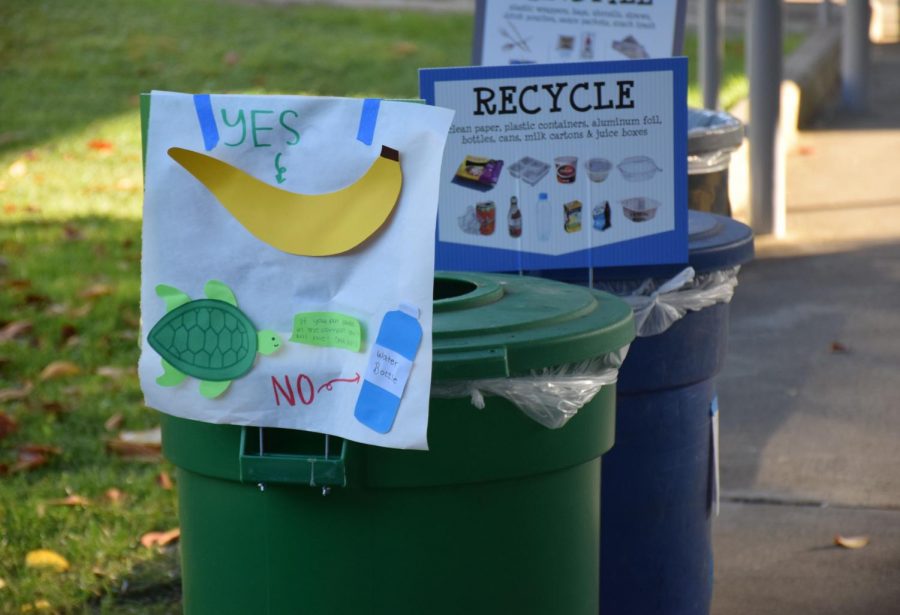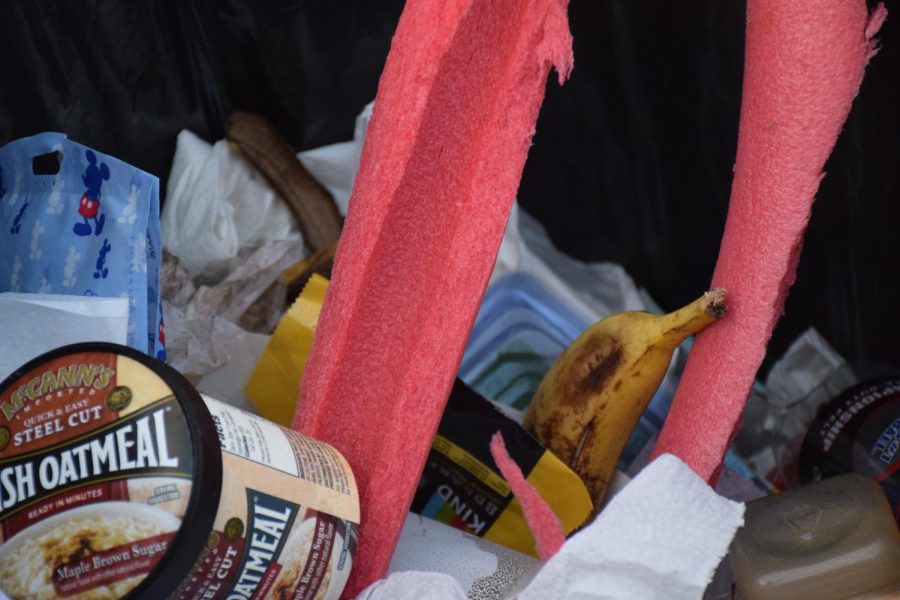Science Course Implements Trash-Sorting Unit
December 5, 2019
A Trash Audit unit has been added to the Living Earth curriculum in order to teach the correct way to dispose of garbage in an effort to make Campolindo more environmentally-friendly.
According to Living Earth teacher Rene Gillibert, as part of the unit, “the students went and looked to see what was in the 3 different trash cans garbage recycling and compost. And then they noticed that there’s a lot of misplaced garbage. And so, they designed different types of signs to hopefully get the students to put trash in the correct receptacles.”
Students created new signage during class time.
Living Earth teacher Jay Chugh said that 1 of the goals of the Trash Audit was to “prevent the amount of waste that goes to a landfill.” Chugh said that, when he started teaching at Campolindo, the school “just had the 1 trash can and it was full of compostable stuff [and] recyclable stuff.”
According to Chugh, the school will financially benefit from sorting waste. “Of course it’s good for the environment, [but] it also saves the school [a] tremendous amount of money and maybe that’s something we should publicize better,” said Chugh.
Some classes made signs with catch phrases that encourage proper disposal. “Some students tell me that they notice the handmade signs better than the computer generated signs,” said Living Earth teacher Tren Kauzer.
Freshman Audrey Le-Nguyen agreed that the student-made signs “draw more attention and allow for another representation to see what items go in each bin.”
Gilbert said that, hopefully, “after 3 more years, then all of the students will have been taught which trash [should] go into which receptacle.”
According to Living Earth teacher Roxanna Jackman, the “benefit of the [sign-making] project really was just the freshmen learning, very specifically, which trash belongs in the bin, and hopefully caring a little bit more.”
Jackman said that she still finds misplaced items in the bins in her classroom. “I’m constantly noticing [it] in this own room. I’ll be like like, ‘What’s up with this? You know you guys learn, you’re supposed to be the ones who care. And here you just put a bunch of plastic into the green bin,’” said Jackman.
“I think people just get in a hurry,” added Jackman, who believes that people know where everything goes; they just do not take the time to properly organize their waste.
Even though the signs may be helping, Kauzer said, “We could do much more than we are.” He added that, in the future, he and Leadership may introduce an incentive to encourage students to do their part. “We’re thinking about doing a contest where you get raffle tickets if you sort your trash correctly,” he said.
According to Chugh, everyone could be doing more to help the environment.
Chugh said that he sometimes sees students, “throw away, like, their whole lunch bag, like you know, [a] fully uneaten apple.”
“We live in a more affluent, like, privileged, you know, fortunate community, and so people don’t stop to think, ‘Hey, I could donate this food to the food bank’ or, ‘Hey I can pick up my trash so somebody else doesn’t have to pick it up,’” said Chugh.
Le-Nguyen said that she’s seen her classmates “just throw [trash] in the trash bin” without sorting it, adding, “in ecosystems, trash has overrun all of it and it’s polluting everything.”


